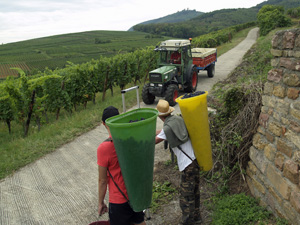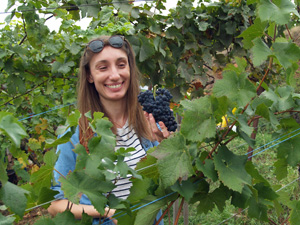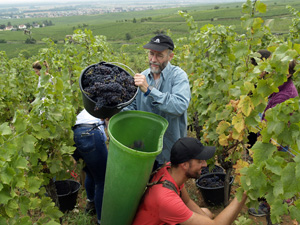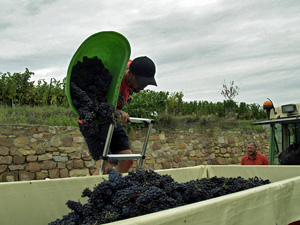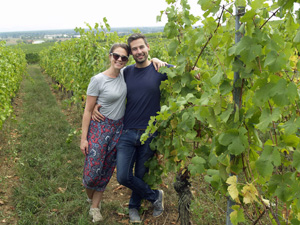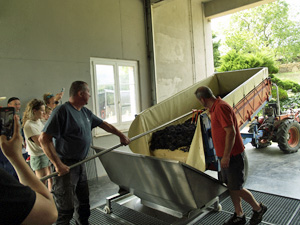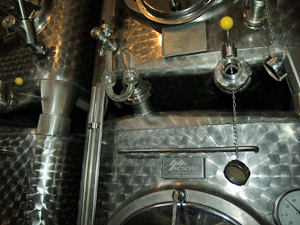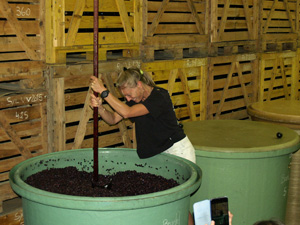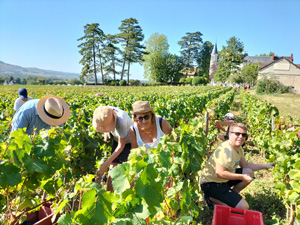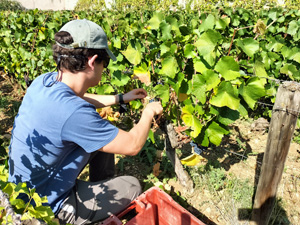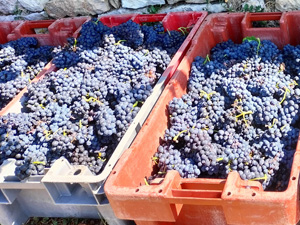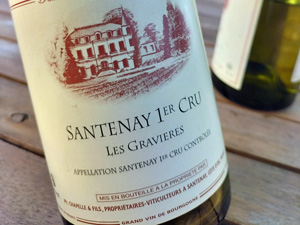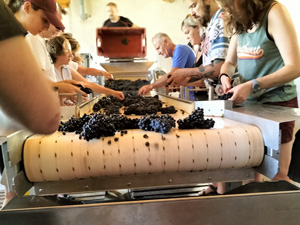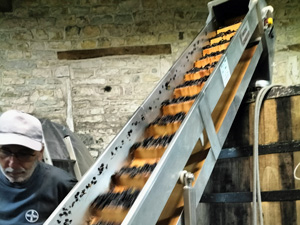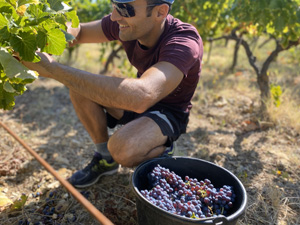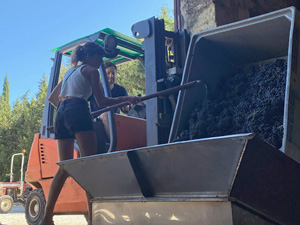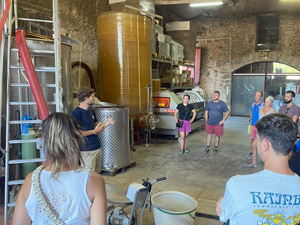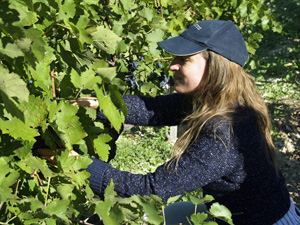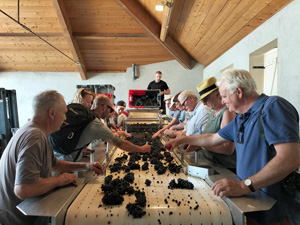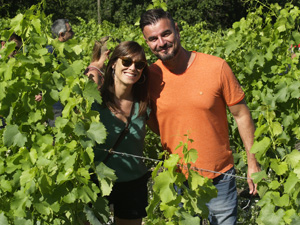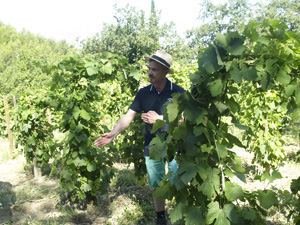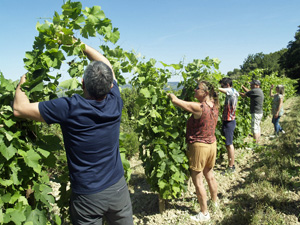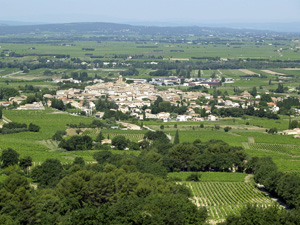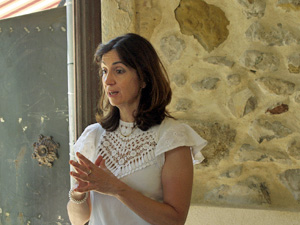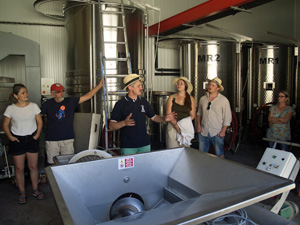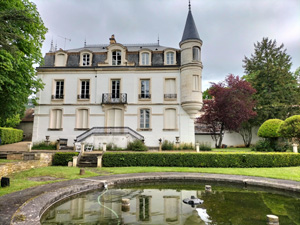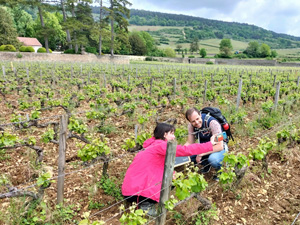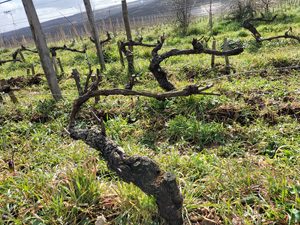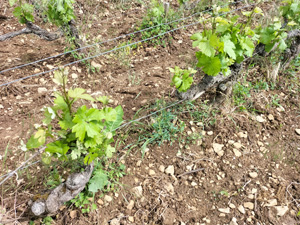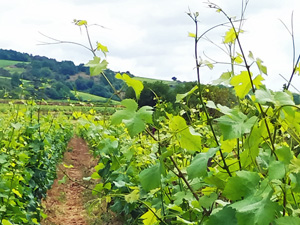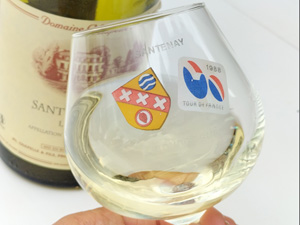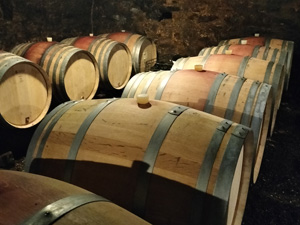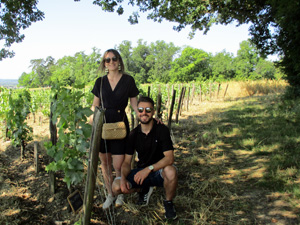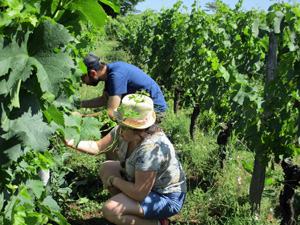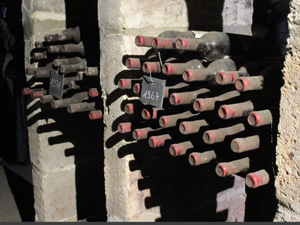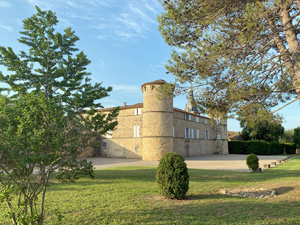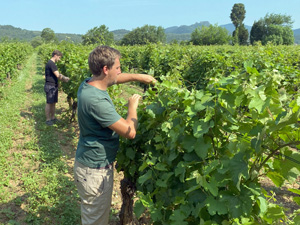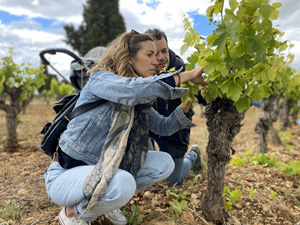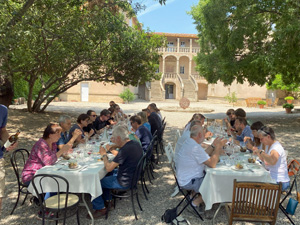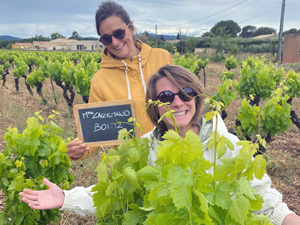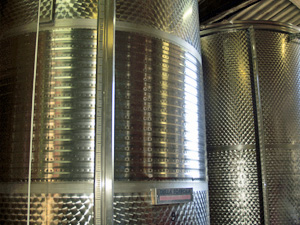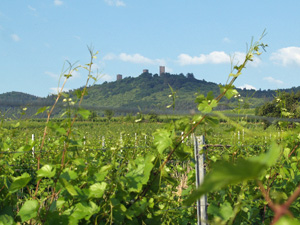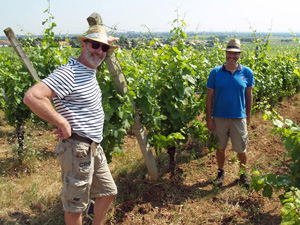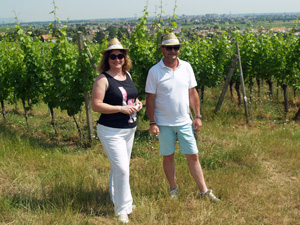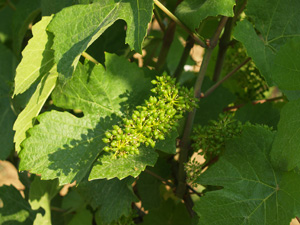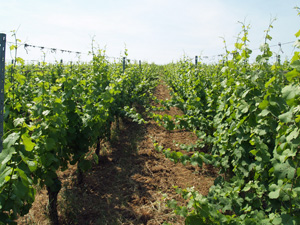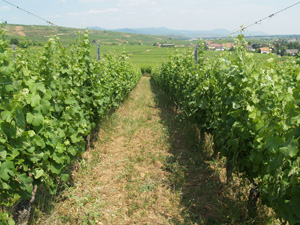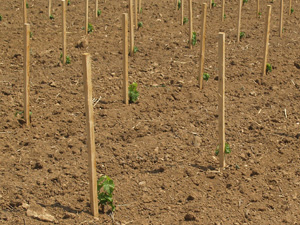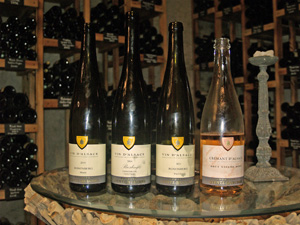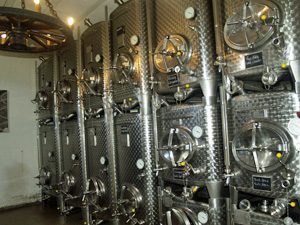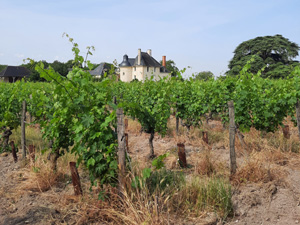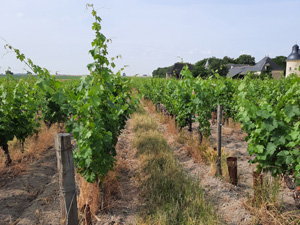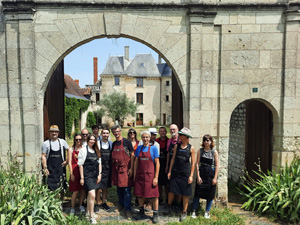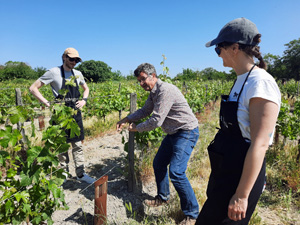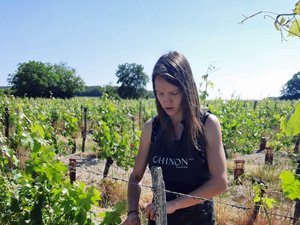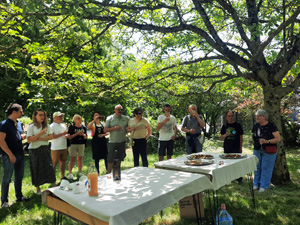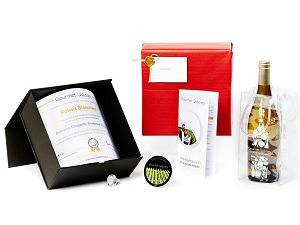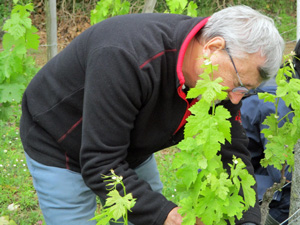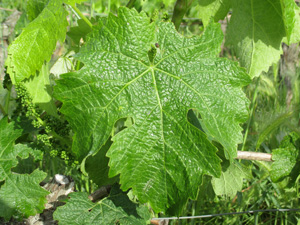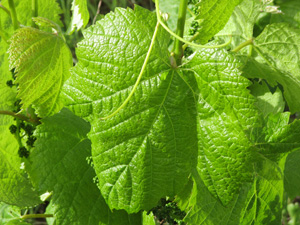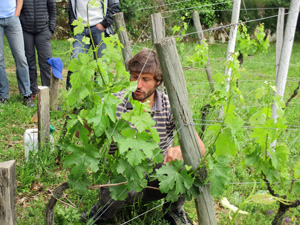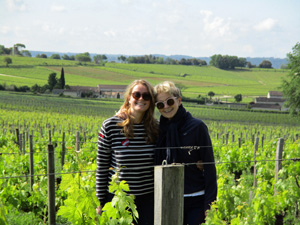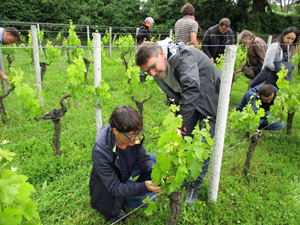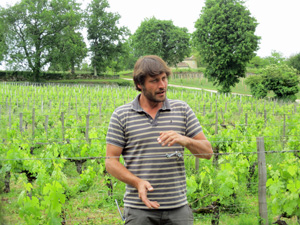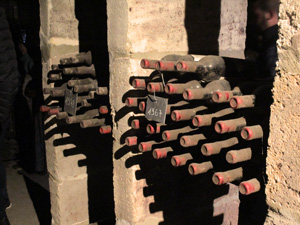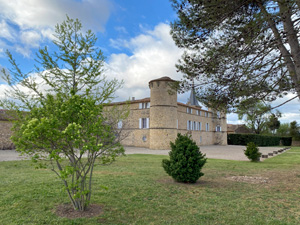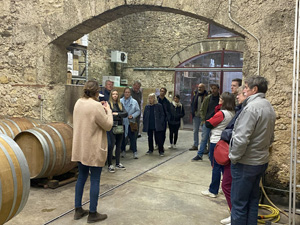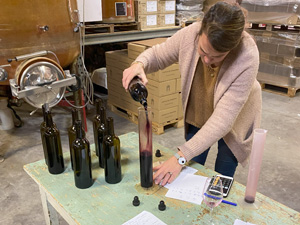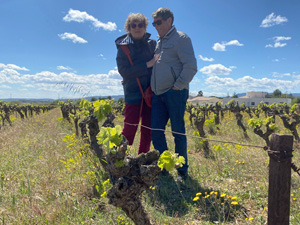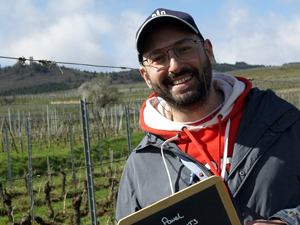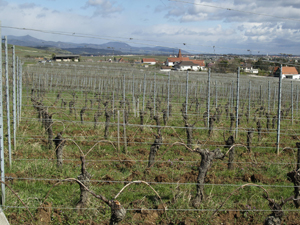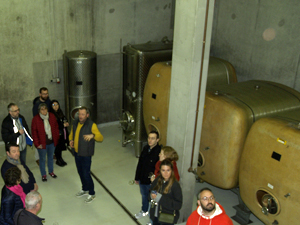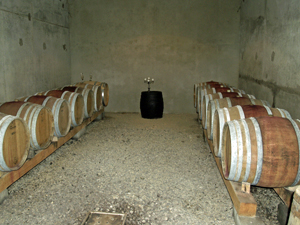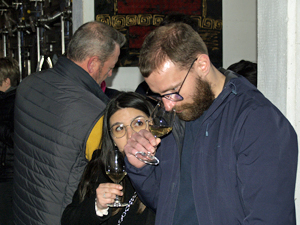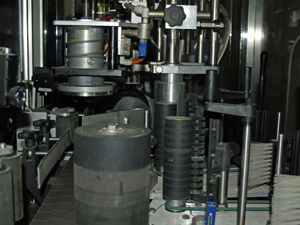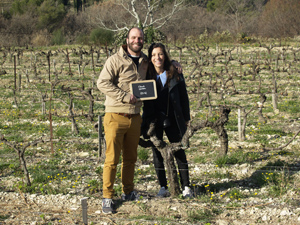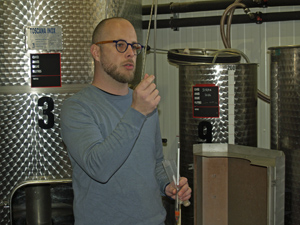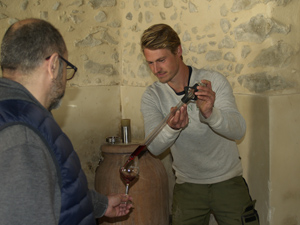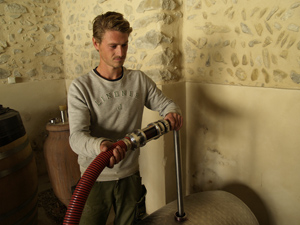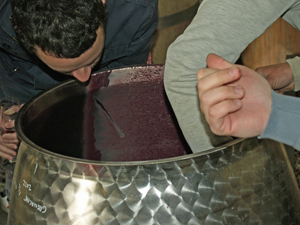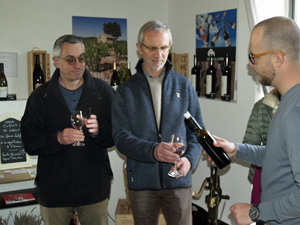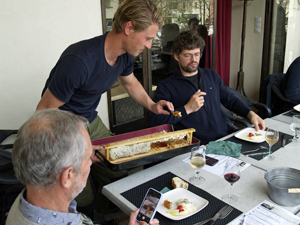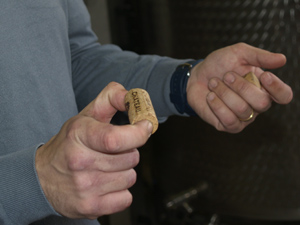Participate in the grape harvest in Saint-Emilion
- Categories :
- Gifts
- Wine
- Bordeaux
- Wine Making
- Gourmet Odyssey
- Château Coutet
This weekend it was the turn of Château Coutet in Saint-Emilion to welcome the clients of the Gourmet Odyssey Wine Experience. It’s harvest time, and our apprentice winemakers were able to get involved in picking the grapes and learn about the work of the winemaker in the cellar at harvest time. We spent two really interesting days with Adrien and Alain, the winemakers at the winery.
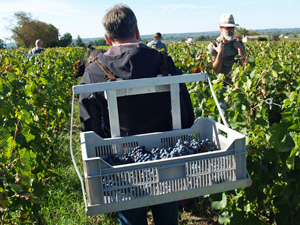
After the introductions, we ventured out into the vineyard to visit the plot where our adopted vines are located. On the way, we compared the different types of soil that make up the three distinct terroirs of the estate.
The Peycocut vineyard is located on top of the limestone plateau of Saint-Emilion, and we took a few minutes to say hello to our adopted vines and admire the view.
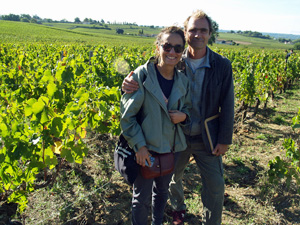
But we weren’t just there to wander about and listen. We had some work to do! We learnt how to pick the grapes and armed with a pair of secateurs and a bucket, we started to harvest a plot of cabernet franc vines.
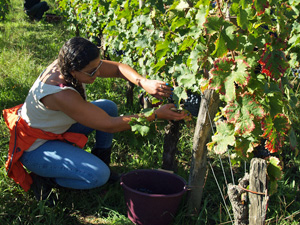
The grapes were in great condition, and our buckets quickly filled up! We emptied them into a crate, and a porter then took them back to the beginning of the row to be put onto the trailer.
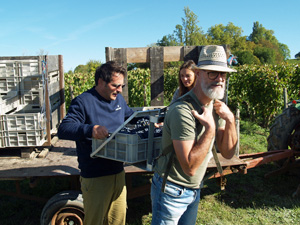
We then followed the grapes back to the winery before enjoying a nice cold glass of Le Grand Verdus Vertige white wine produced by one of the cousins, on the lawn in front of the château.
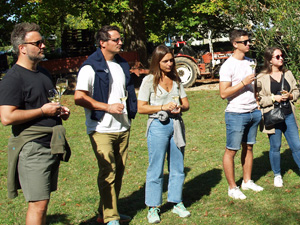
Lunch had been prepared by a local caterer who delighted our taste buds with a winemaker’s salad of mesclun, smoked lardons, free-range egg, échalottes and grapes, followed by guinea fowl stuffed with duck aiguillettes, morille and foie gras sauce, potato rosace and vegetables, and a chocolate praline dessert. During the meal, we tasted the 2020 Château Coutet Saint-Emilion Grand Cru, and the 2018 Les Demoiselles Saint-Emilion Grand Cru.
We returned to the cellar after lunch to put our harvest into the vats. First of all, we needed to separate the grapes from the stems. Normally it is done by a machine, but as is the tradition at the winery for the Emeri wine, we did it by hand!
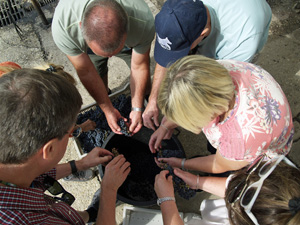
Around some large bins, we first sorted the bunches to remove the damaged grapes, before putting the good ones into the bins. It’s a long job, but one that is nice to do.
The grapes were then poured into a vat. The winemakers explained how the yeast that is naturally present on the grape skins will transform the grape juice into wine during the fermentation phase, and how the colour and tannins are extracted during the maceration phase.
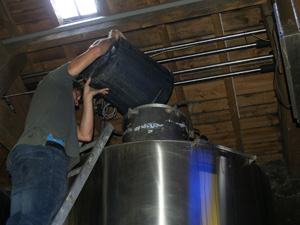
Many thanks to the winemakers at Château Coutet for having welcomed us so well, and for enabling us to become harvesters for a day! We can’t wait to discover the next phase during the Vinification Experience Days next spring.



